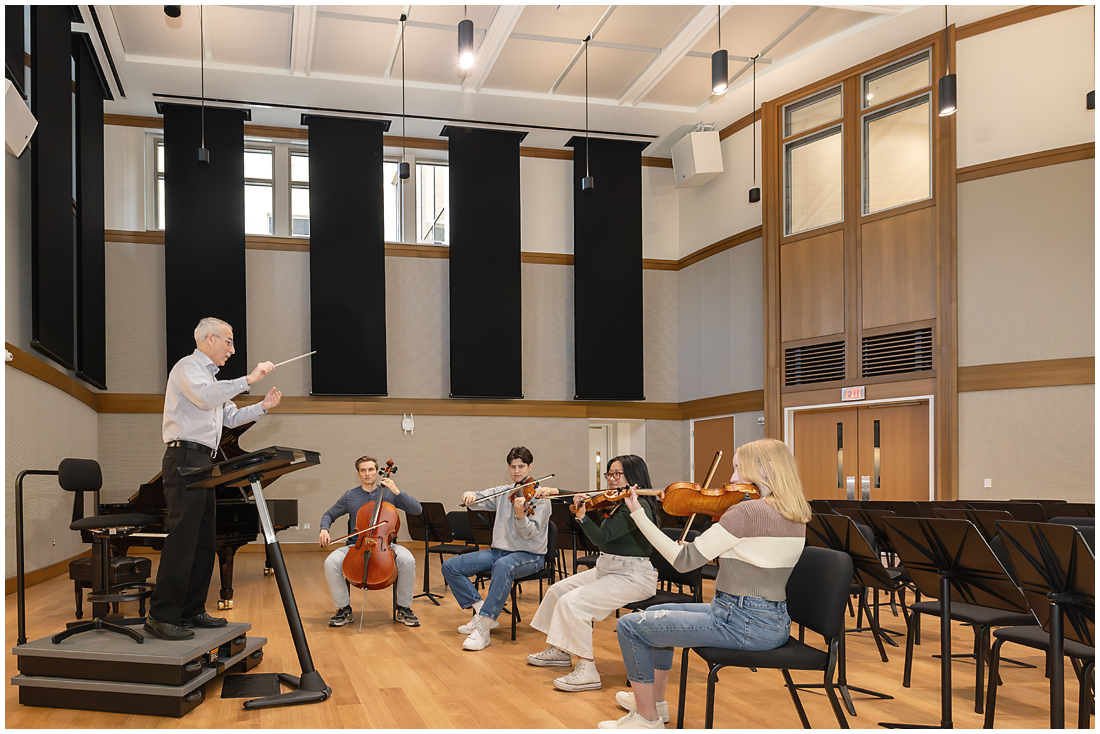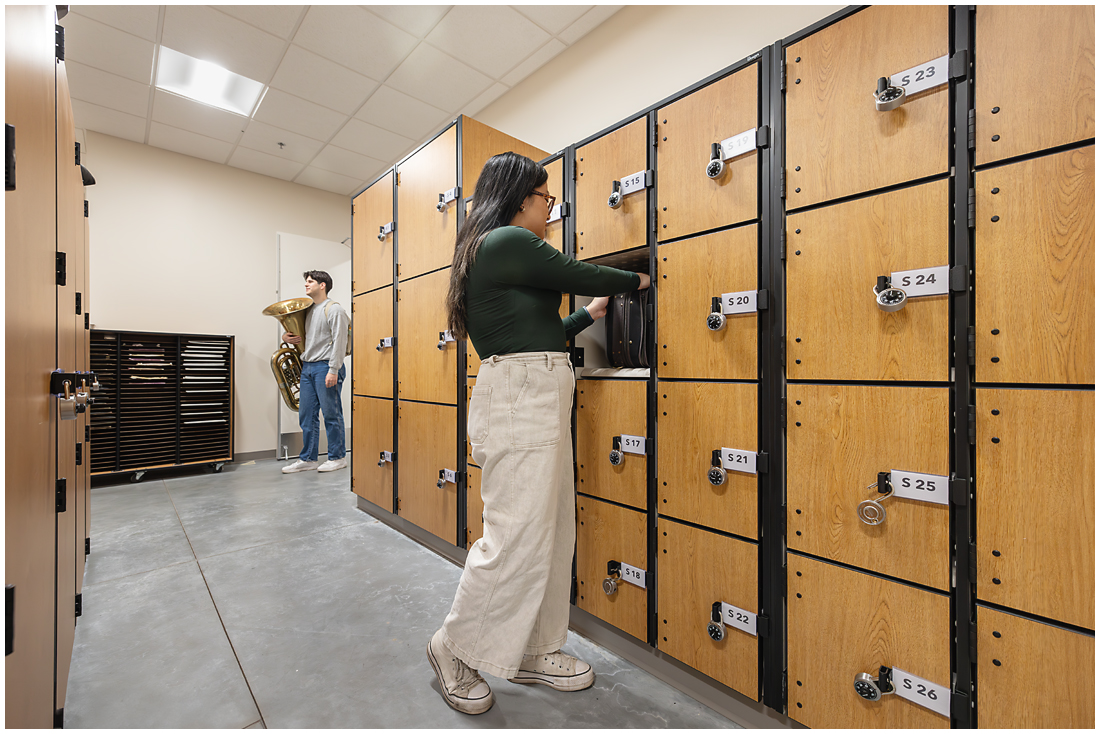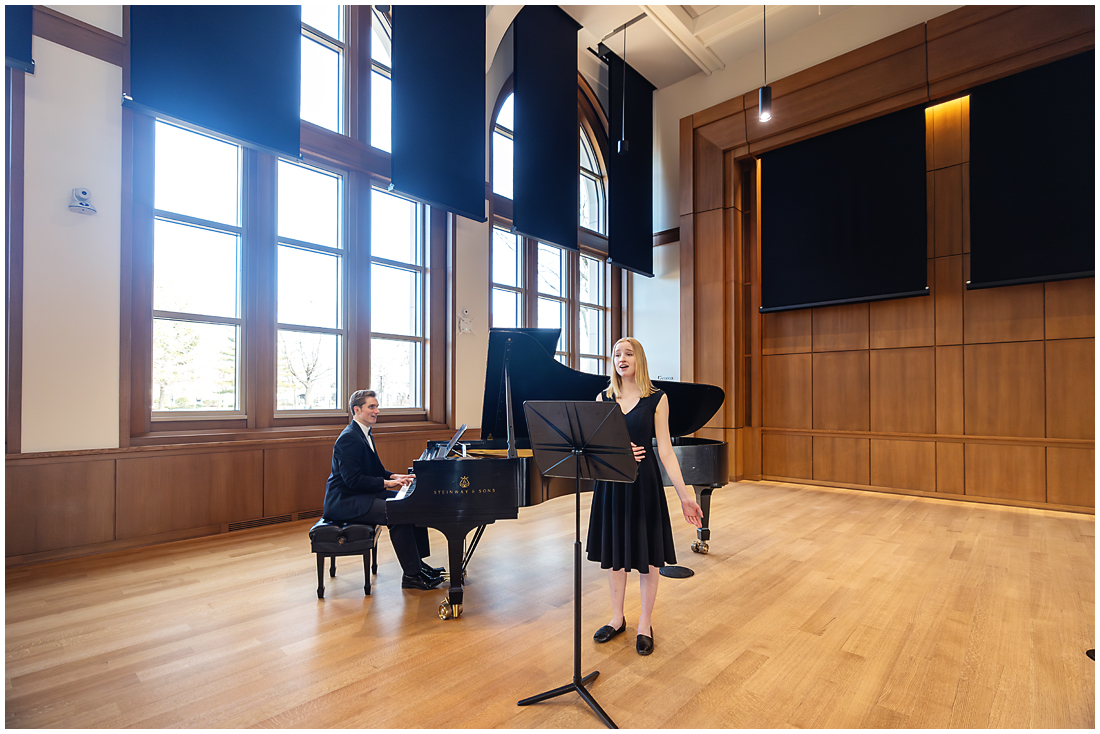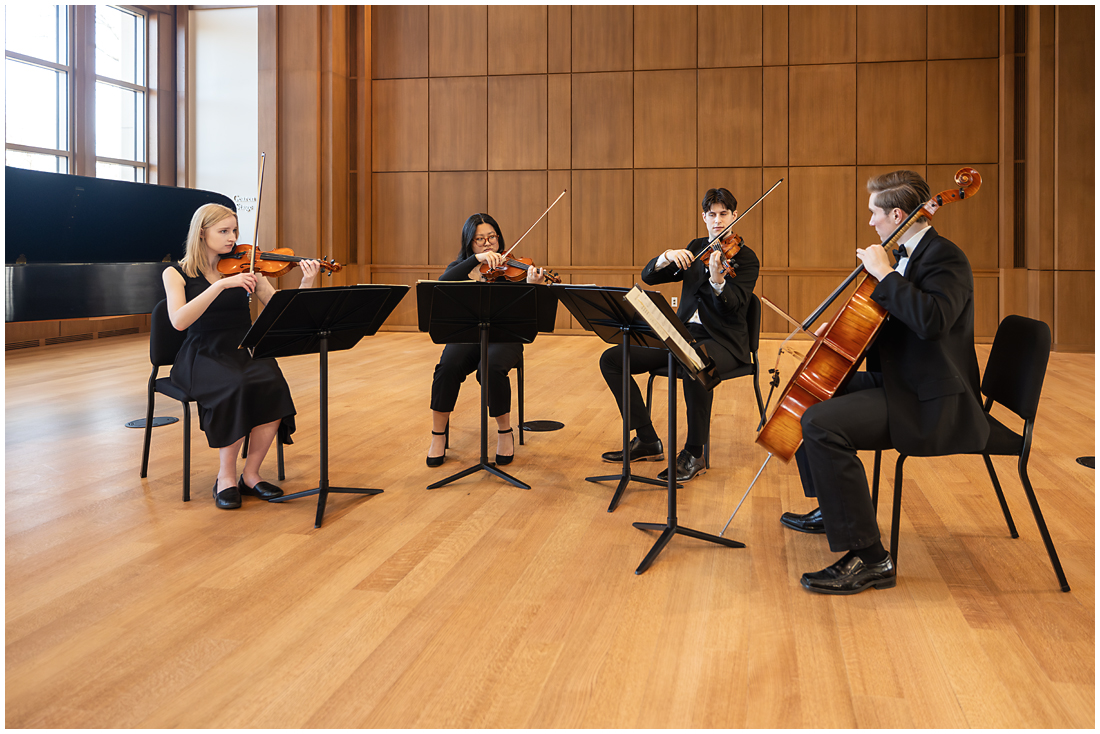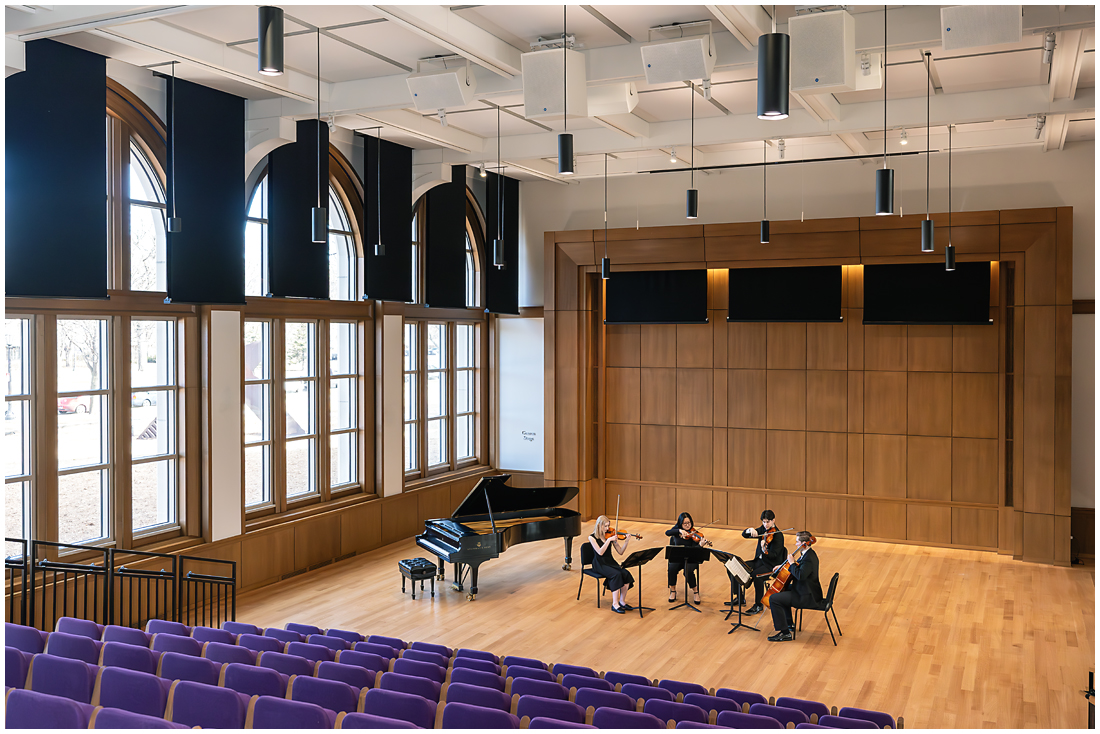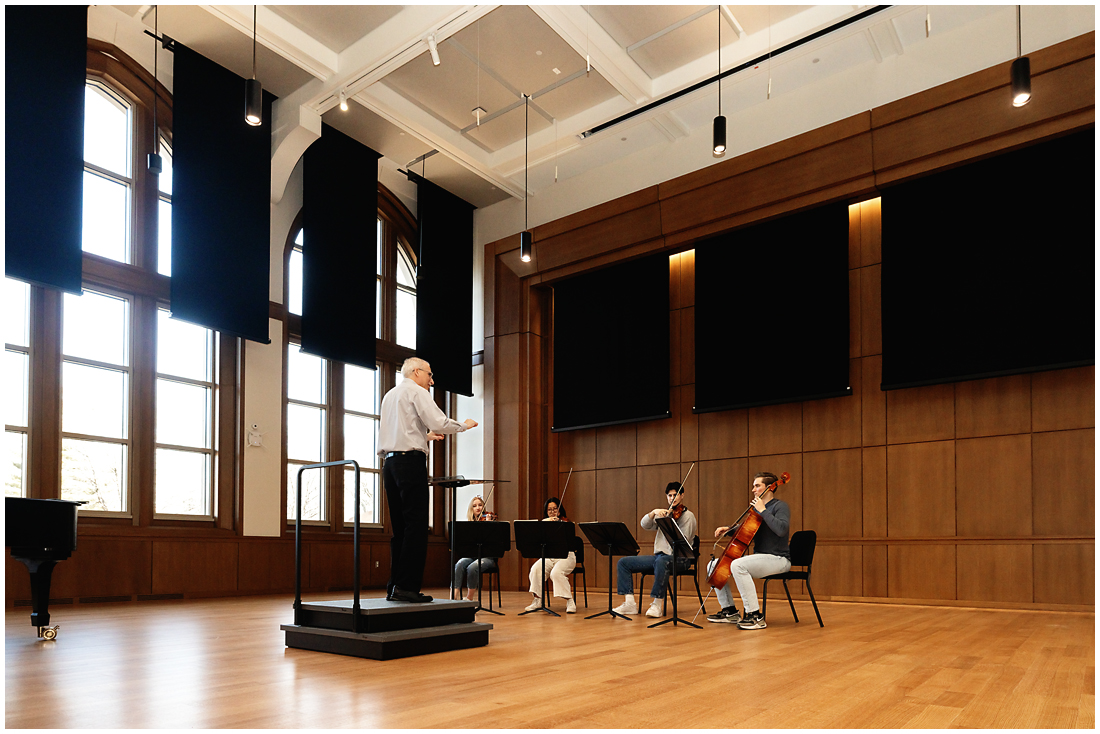Project: New Construction; Center for STEAM Education
Location: St. Paul, MN
Architect: BWBR
Acoustician: Jaffe Holden
“The Transform banners help provide flexible acoustics in both our new performance hall and rehearsal space so we can better accommodate groups of various sizes,” says Doug Orzolek, Professor of Music and Director of Graduate Programs in Music Education at the University of St. Thomas in St. Paul, MN.
St. Thomas’ Schoenecker Center opened in 2024 as the campus center for STEAM education (science, technology, engineering, arts and math). Totaling 130,000 square feet, with five levels of open floor design, it also includes science labs, art gallery, café and community areas.
When planning the large music spaces – the Sarah Rose Hall Instrumental Rehearsal space and Choral Performance Hall – Orzolek recalls the need for flexible spaces was discussed from the outset. He also credits the acousticians from Jaffe Holden for asking the right questions about how the spaces would be used.
Matt Nichols, Principal with Jaffe Holden, explains that his firm’s acoustic modeling determines the total banner area necessary for each space and the optimal amount of air space between the banners and the wall.
“The Transform banners provide acoustic flexibility for multi-use spaces that must transition between a lively space and a dry, controlled space,” notes Nichols. “Deploying them in the rehearsal room, for example, helps students really hear what they’re playing and pinpoint problems.”
Orzolek agrees. For Symphonic Band rehearsals, when preparing for a concert, he deploys the banners 75%. “Students comment they can hear themselves better, which is crucial as we are focusing on notes, rhythms and articulation accuracy.
“The ability to hear distinctly is vital for both me as the director and for the students,” he adds. As the performance date approaches, raising the banners better approximates the acoustics of their off-campus concert location. Orzolek says operating the Transform banners is easy, with user-friendly controls and five preset settings plus the ability for fine-tuning.
He considers the ability to make real-time acoustical adjustments with the banners crucial, especially considering concerns about hearing conservation for today’s students; they are facing more noise-related hearing loss than any other generation. “If using these banners can help conserve some of their hearing, I’m all for that,” concludes Orzolek.
Note: At St. Thomas, Orzolek has co-taught an interdisciplinary Musical Acoustics course for more than 20 years with a physics professor. He explains, “The information contained in Wenger’s Planning Guides is a great supplement to this course, providing a solid foundational understanding of room acoustics that helps students apply theoretical concepts in practical scenarios.” (Click here to access these Wenger resources, including the Acoustics Primer, Performance Spaces Planning Guide and Planning Guide for Secondary School Music Facilities.)

